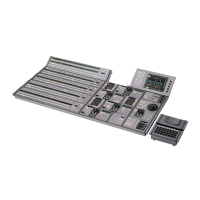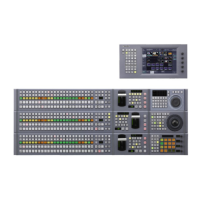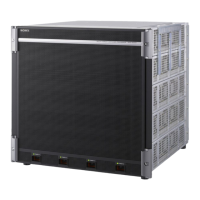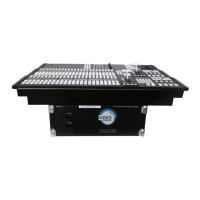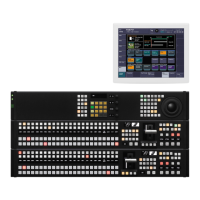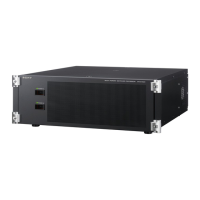Serial Port Settings (Serial Port Assign Menu)
Chapter
22
DCU
Setup
(DCU)
b)
Status Sense Interval: 1 to 10
10
Press [Set].
11If required, repeat steps 8 to 10, to set other items.
To enable or disable the loop and recue functions
Press [Loop] and [Recue], respectively.
Loop: Replay the recalled file in a continuous loop.
Recue: After playing the recalled file, recue to the
beginning and then stop.
Making detailed settings for a disk
recorder (Odetics protocol)
1
In the DCU >Serial Port Assign menu, select the target
for the setting (DCU1 or DCU2) from the <DCU
Select> group.
2
Using any of the following methods, select the serial
port connected to the disk recorder for which you want
to make the settings.
•
Directly press the list in the status area.
•
Press the arrow keys to scroll the reverse video
cursor.
•
Turn the knob.
a) The range of the setting value depends on the DCU port settings.
When the MKS-2700 is connected, select 2 for the slot and a value in
the range 1 to 6 for the port.
3
Press [Port Setting].
The DCU >Serial Port Assign >DDR Odetics Setting
menu appears.
The target serial port and slot number, protocol, serial
port name, and SCU number are displayed at the top of
the status area. The setting status is displayed in the
lower part of the status area.
4
In the <TC Sense> group, select the type of timecode
sensing.
Zero based: Mode in which timecode is sensed
(detected) taking the first frame of the recalled file
as 00:00:00:00.
SOM based: Mode in which timecode saved in the
recalled file is sensed.
Notes
The details of the above operation modes depend on
the connected device. For more information, consult
the documentation for the connected device.
5
Using any of the following methods, specify the item
to which the setting applies.
•
Directly press the list in the status area.
•
Press the arrow keys to scroll the reverse video
cursor.
•
Turn the knob.
a) 1. Maximum Open Delay: Maximum time required to open a file
2.
Maximum Cueup Delay: Maximum time required to cue up a file
3.
Play After Cueup Delay: Delay time from the cued-up state to
begin playback
4.
Stop Delay: Delay time from issuing the Stop command until
actually stopping
5.
Still Delay: Delay time from issuing the Still command until
actually stopping
6.
Command Delay (Auto Mode): Delay time from issuing the Auto
Mode On/Off command until the command takes effect.
7.
Command Delay (Out Preset): Delay time from issuing the Out
Preset command until the command takes effect.
8.
Command Delay (Preview In Preset): Delay time from issuing
the Preview In Preset command until the command takes effect.
9.
Internal Parameter (1): For future expansion (set to “255”)
10.
Internal Parameter (2): For future expansion (set to “255”)
11.
Internal Parameter (3): For future expansion (set to “255”)
12.
Internal Parameter (4): For future expansion (set to “255”)
6
Turn the knob to set the value.
7
Press [Set].
8
Repeat steps 5 to 7 as required to make the settings for
other items.
Making detailed settings for an Extended
VTR
1
In the DCU >Serial Port Assign menu, select the
setting target (DCU1 or DCU2) from the <DCU
Select> group.
2
Using any of the following methods, select the serial
port connected to the Extended VTR for which you
want to make the settings.
•
Press directly on the list in the status area.
•
Press the arrow keys to scroll the reverse video
cursor.
•
Turn the knob.
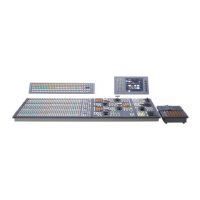
